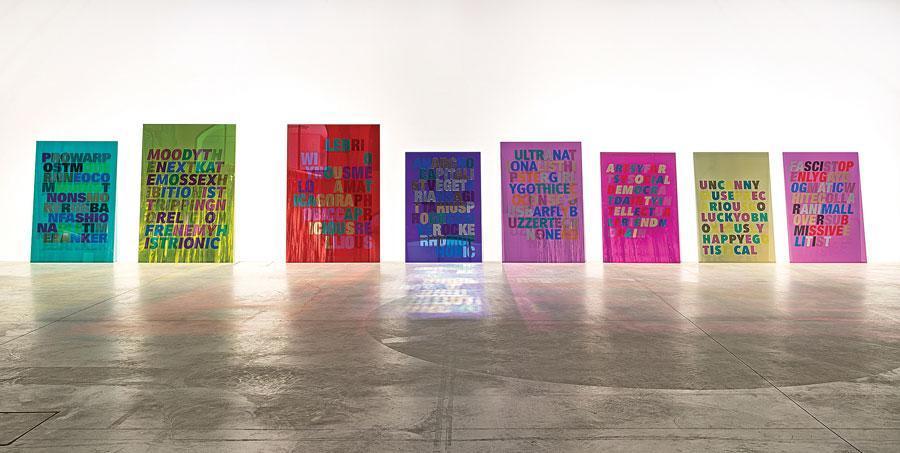
The artist duo Yasemin Baydar and Birol Demir, who are behind :mentalKLINIK, have once again left their mark with three simultaneous exhibitions in Europe. The pair currently live and work in Brussels. Shows in Brussels, Vienna and Belgrade exhibit their new and previous artworks, which focus on different themes around technology, social media, internet, codes, attention, economy, psychology and how perceptions of happiness change in the world.
In one way, they want us to discover how life develops with technology and the internet. In another, they want us to become fully aware of the effects of this culture. However, their creative power is in creating works around these themes and also in how they present their artwork to audiences. For them, artwork is just a presentation, a vessel (just like language humans use to communicate). The pair’s artwork allows us to discover the broad language of the world we are not aware of in our daily lives.
“We define ourselves as the Bridge Generation. We were born in the 20th century but we began creating works in the 21st century. The first :mentalKLINIK exhibition was in 2000,” said the duo. :mentalKLINIK’s works are a passage between the 20th century and 21st century. The pair believes their works are a transition from their generation to this generation.
‘‘We do not mean to exalt technology, but on the contrary, we try to show people how technology affects us in the physical world,” said :metalKLINIK.
That is why the works of the duo are controversial, provocative and almost seductive. These artworks are destined to give the viewer deep thoughts on the life we are living and maybe the dark side of contemporary life, which may be perceived as the fantasy of a good life, technology, accelerated capitalism, hyper-connectivity and desire.
However, it is not easy to gather all of these notions in one exhibition. That is why they work carefully and meticulously. According to the duo, Baydar is the “mental” part and Demir is the “klinik” part of :mentalKLINIK, but sometimes this changes. Together they create something that is desirable and somehow they position :mentalKLINIK as an organism or a creation, which exists separately from them.
“Our idea is to give the torch to another artist for a while so :mentalKLINIK can continue to exist without us as well,” the duo said.
This kind of a revolutionary idea can almost exist with revolutionary artworks. The pair shows us details we encounter in everyday life but are not aware of, such as the absurdity of social media language and the seductive world of marketing.
Aesthetics of celebration
In :mentalKLINIK’s work, there is always an aesthetic of celebration. In most of their famous works such as Moet, (large-scale twist off tops from champagne bottles that lay strewn on the floors) or Whiff (taken with the high-speed video camera technique), shiny walls and fluorescent lights. Somehow, all of these artworks remind us there is a celebration. However, there is no subject or object. You cannot see who is celebrating what. You can only see the end or the moment of celebration.
The duo said they did this on purpose, noting that the important thing about celebration is its aesthetics. Language is an essential part of :mentalKLINIK’s works. Their exhibition’s name “Obnoxiously Happy” also proves this.
They provoke the audience using oxymorons and show people how two unrelated words stand together and create a new meaning.
This is also a significant effect on social media, according to them. “Since it changes everything, it also changes the language we use,” the duo said.
Profile series, good life fantasy
We all become used to hearing and seeing made up words on social media and the internet. Since we have Twitter or Instagram, people are doing everything they can to define themselves with labels. :mentalKLINIK is concerned about these labels. That is why they began creating a profile series in 2015.
“We believe we are living in an era where the language is very dominant in our lives. Maybe people do not read, but people write and the text is open to codes and brave. People love to define themselves with made up or real words such as frenemy, religious, celebritytweet, etc.”
In a way, :mentalKLINIK feeds itself from the creativity of these words and in another way, they would like to show the viewer how humans are destined to become recognized by these profile words.
“This precarious lifestyle drives everyone to design themselves again and again. So, a person becomes both a subject and an object at the same time while being datafied,” said the duo.
Behind all of this, there is a desire to be recognized. This is a part of a good life fantasy, according to the pair. :metalKLINIK, on the other hand, believes a good life is only being aware of the environment we are living in and what is happening around us. It is a must to be aware in these times, said the duo, adding that each word serves as a code and internet industry giants are just looking for these codes and each person is only data in the system.
Among all these dark sided works, people are having fun at :mentalKLINIK shows. For example, their current exhibition at Brussels has attracted many visitors.
“There are two sides of :mentalKLINIK shows. You can have tremendous fun and add selfies to your good-life fantasy, or you can see the dark side of the system. It is only a matter of how images turn into a concept in your mind,” said the pair.